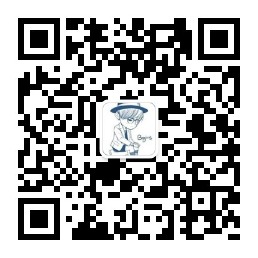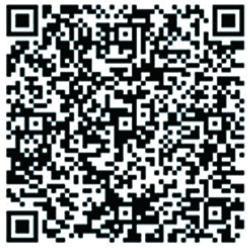您现在的位置是:首页 > 网站制作 > gogo
Go 语言Map(集合)
![]() 胜于蓝2013-12-30【go】人已围观
胜于蓝2013-12-30【go】人已围观
简介Map 是一种无序的键值对的集合。Map 最重要的一点是通过 key 来快速检索数据,key 类似于索引,指向数据的值。Map 是一种集合,所以我们可以像迭代数组和切片那样迭代它。不过,Map
Map 是一种无序的键值对的集合。Map 最重要的一点是通过 key 来快速检索数据,key 类似于索引,指向数据的值。
Map 是一种集合,所以我们可以像迭代数组和切片那样迭代它。不过,Map 是无序的,我们无法决定它的返回顺序,这是因为 Map 是使用 hash 表来实现的。
定义 Map
可以使用内建函数 make 也可以使用 map 关键字来定义 Map:
/* 声明变量,默认 map 是 nil */ var map_variable map[key_data_type]value_data_type /* 使用 make 函数 */ map_variable := make(map[key_data_type]value_data_type)
如果不初始化 map,那么就会创建一个 nil map。nil map 不能用来存放键值对
实例
下面实例演示了创建和使用map:
实例
package mainimport "fmt"
func main() {
var countryCapitalMap map[string]string /*创建集合 */
countryCapitalMap = make(map[string]string)
/* map插入key - value对,各个国家对应的首都 */
countryCapitalMap [ "France" ] = "巴黎"
countryCapitalMap [ "Italy" ] = "罗马"
countryCapitalMap [ "Japan" ] = "东京"
countryCapitalMap [ "India " ] = "新德里"
/*使用键输出地图值 */
for country := range countryCapitalMap {
fmt.Println(country, "首都是", countryCapitalMap [country])
}
/*查看元素在集合中是否存在 */
capital, ok := countryCapitalMap [ "American" ] /*如果确定是真实的,则存在,否则不存在 */
/*fmt.Println(capital) */
/*fmt.Println(ok) */
if (ok) {
fmt.Println("American 的首都是", capital)
} else {
fmt.Println("American 的首都不存在")
}
}
以上实例运行结果为:
France 首都是 巴黎 Italy 首都是 罗马 Japan 首都是 东京 India 首都是 新德里 American 的首都不存在
delete() 函数
delete() 函数用于删除集合的元素, 参数为 map 和其对应的 key。实例如下:
实例
package mainimport "fmt"
func main() {
/* 创建map */
countryCapitalMap := map[string]string{"France": "Paris", "Italy": "Rome", "Japan": "Tokyo", "India": "New delhi"}
fmt.Println("原始地图")
/* 打印地图 */
for country := range countryCapitalMap {
fmt.Println(country, "首都是", countryCapitalMap [ country ])
}
/*删除元素*/ delete(countryCapitalMap, "France")
fmt.Println("法国条目被删除")
fmt.Println("删除元素后地图")
/*打印地图*/
for country := range countryCapitalMap {
fmt.Println(country, "首都是", countryCapitalMap [ country ])
}
}
以上实例运行结果为:
原始地图 India 首都是 New delhi France 首都是 Paris Italy 首都是 Rome Japan 首都是 Tokyo 法国条目被删除 删除元素后地图 Italy 首都是 Rome Japan 首都是 Tokyo India 首都是 New delhi
基于 go 实现简单 HashMap,暂未做 key 值的校验。
package main
import (
"fmt"
)
type HashMap struct {
key string
value string
hashCode int
next *HashMap
}
var table [16](*HashMap)
func initTable() {
for i := range table{
table[i] = &HashMap{"","",i,nil}
}
}
func getInstance() [16](*HashMap){
if(table[0] == nil){
initTable()
}
return table
}
func genHashCode(k string) int{
if len(k) == 0{
return 0
}
var hashCode int = 0
var lastIndex int = len(k) - 1
for i := range k {
if i == lastIndex {
hashCode += int(k[i])
break
}
hashCode += (hashCode + int(k[i]))*31
}
return hashCode
}
func indexTable(hashCode int) int{
return hashCode%16
}
func indexNode(hashCode int) int {
return hashCode>>4
}
func put(k string, v string) string {
var hashCode = genHashCode(k)
var thisNode = HashMap{k,v,hashCode,nil}
var tableIndex = indexTable(hashCode)
var nodeIndex = indexNode(hashCode)
var headPtr [16](*HashMap) = getInstance()
var headNode = headPtr[tableIndex]
if (*headNode).key == "" {
*headNode = thisNode
return ""
}
var lastNode *HashMap = headNode
var nextNode *HashMap = (*headNode).next
for nextNode != nil && (indexNode((*nextNode).hashCode) < nodeIndex){
lastNode = nextNode
nextNode = (*nextNode).next
}
if (*lastNode).hashCode == thisNode.hashCode {
var oldValue string = lastNode.value
lastNode.value = thisNode.value
return oldValue
}
if lastNode.hashCode < thisNode.hashCode {
lastNode.next = &thisNode
}
if nextNode != nil {
thisNode.next = nextNode
}
return ""
}
func get(k string) string {
var hashCode = genHashCode(k)
var tableIndex = indexTable(hashCode)
var headPtr [16](*HashMap) = getInstance()
var node *HashMap = headPtr[tableIndex]
if (*node).key == k{
return (*node).value
}
for (*node).next != nil {
if k == (*node).key {
return (*node).value
}
node = (*node).next
}
return ""
}
//examples
func main() {
getInstance()
put("a","a_put")
put("b","b_put")
fmt.Println(get("a"))
fmt.Println(get("b"))
put("p","p_put")
fmt.Println(get("p"))
}
Tags:
很赞哦! ()
上一篇:Go 语言范围(Range)
下一篇:Go 语言递归函数
随机图文

Go 语言数组
Go 语言提供了数组类型的数据结构。数组是具有相同唯一类型的一组已编号且长度固定的数据项序列,这种类型可以是任意的原始类型例如整形、字符串或者自定义类型。相对于去声
Go 语言数据类型
在 Go 编程语言中,数据类型用于声明函数和变量。数据类型的出现是为了把数据分成所需内存大小不同的数据,编程的时候需要用大数据的时候才需要申请大内存,就可以充分利用内存。
Go 语言循环语句
在不少实际问题中有许多具有规律性的重复操作,因此在程序中就需要重复执行某些语句。以下为大多编程语言循环程序的流程图: Go 语言提供了以下几种类型循环处理语句: 循环
Go 语言变量作用域
作用域为已声明标识符所表示的常量、类型、变量、函数或包在源代码中的作用范围。Go 语言中变量可以在三个地方声明: 函数内定义的变量称为局部变量 函数外定义的变量称为全


 扫描关注胜于蓝微信|公众号,第一时间获取网站模板更新动态
扫描关注胜于蓝微信|公众号,第一时间获取网站模板更新动态


